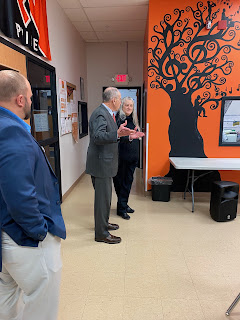Prescription medicine—a critical piece of our cultural fabric—“a pill for every ill”—all you have to do is turn on the TV, listen to the radio, or view ads on the Internet or in the newspaper to see and hear about the latest medicine that can cure migraines, treat pain and stress, keep you more alert, help you sleep or address depression. We walk that fine line between ensuring access to needed medications to preventing misuse and addiction.
Just last year, my son broke his leg, and as a prevention specialist, I was most interested in the consult with the doctor—specifically, the type and amount of pain medications he was proposing to give him. To my dismay, he prescribed a very large dose of pain meds. My son and I agreed that this prescribing practice was excessive, and he may not need most of the pills.
We found ourselves thrust into the middle of the prescription drug misuse problem. How much pain medication would he need? Where would we store the medicine, and how would we discard it after we were done? You say, “Why have this discussion—it won’t be my child.” He would never share medications, nor would he ever misuse or become addicted to this medicine.” Indeed, the discussion was a great exercise, and I was proud of him when he said, “you take care of the pain meds, Mom.” Prevention works!
In this age of a “pill for every ill,” we live in a society where the potential for prescription drug misuse and addiction is ever-present. Among teens and young adults, next to marijuana and alcohol, Rx drugs are misused the most. A recent National Institute on Drug Abuse article states that an estimated 2 million Americans misused prescription pain relievers for the first time within the past year. Additionally, misuse of prescription drug rates are 14.4 percent for youth ages 18 to 25 and 4.9 percent for youth ages 12 to 17.
In 2019, 4.9 percent of U.S. youth ages 12 to 17 reported using nonmedical prescription drugs. Important items to note:
Many teens and young adults still believe that Rx medicines are safer to misuse than illegal drugs.
These medicines are easy to get—about 54 percent of those abusing them obtain them from friends and relatives.
Approximately 2000 teens each day misuse Rx drugs for the first time (NIDA FOR TEENS).
Some teens and young adults will fall down that slippery slope of misuse and addiction. Before you can say, “Not my child,” you may find yourself saying, “it is my child—now what?”
We see the more visible signs of Rx misuse every day:
Philip Seymour Hoffman—died of a heroin overdose, triggered by an addiction to prescription pain medicines.
Whitney Houston—died of an overdose of cocaine and prescription drugs.
Heather Ledger—died of an overdose of sleeping pills—both prescription and over-the-counter.
Michael Jackson, Marilyn Monroe, Anna Nicole Smith, Brian “Crush” Adams (professional wrestler), and Ken Caminiti (1996 Most Valuable Player-played for Houston Astros, San Diego Padres, and the Atlanta Braves)—died of a prescription drug overdose.
Out of the spotlight are the teens and young adults who misuse and may become addicted to these Rx drugs. We need to protect our teens and young people. Be a part of the solution. Start by locking up your meds and properly disposing of them at the Rx Take Back Box at the Van Buren County Sheriff’s Office when they’re no longer needed. Then, get involved. Talk with your teen or young adult. I did! My son ended up taking only 1 of the 30 pain tablets he was prescribed for his broken leg, the remaining pills were successfully disposed of through our local drop-box, and the ensuing discussion—the impetus for this article—created a foundation for him to establish healthy, medicine-taking practices that will last a lifetime.
To learn more about how to prevent Rx drug misuse and addiction, contact the Van Buren County SAFE Coalition at 319-293-2579 or safe.coalition@vbcwarriors.org.











